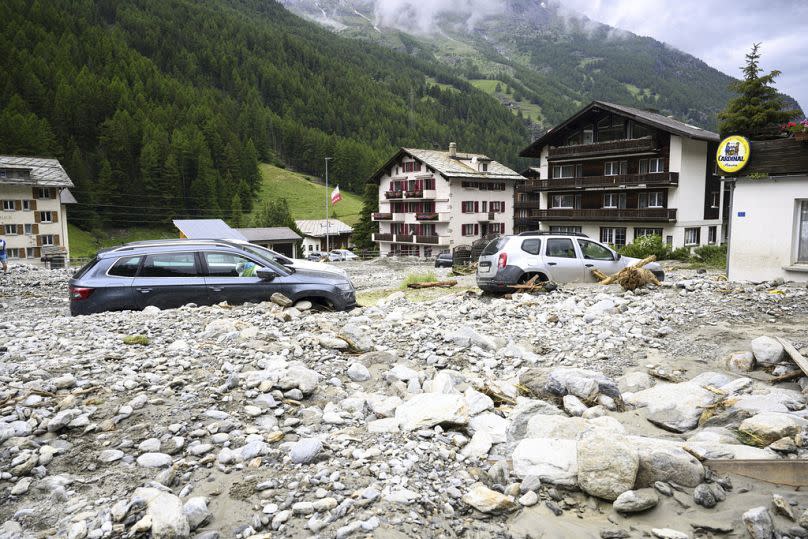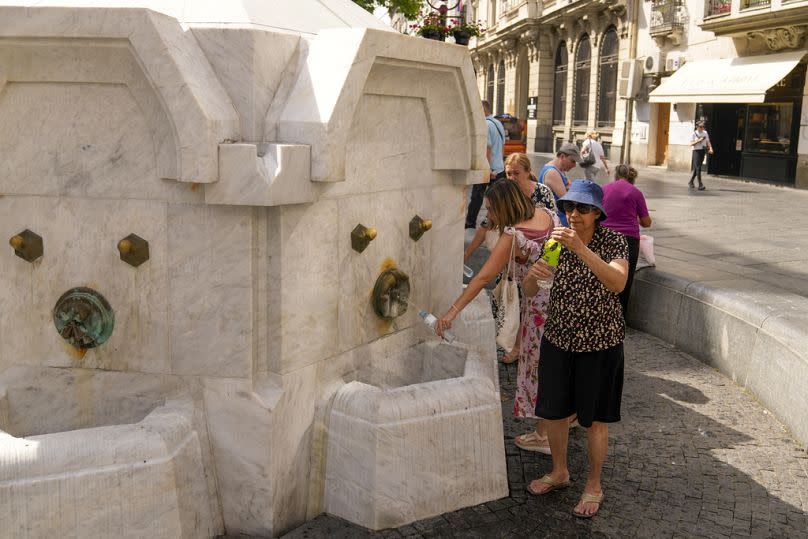Why is Europe experiencing such extremes in its weather and what can be done?

The weather in Europe this July is, effectively, a tale of two halves.
In the north of the continent, temperatures have been far below average, with significantly more rain than normal, while the south is battling heat waves and wildfires.
In Belgium alone, June marked the ninth month in a row with more rain than usual - a new record for the country, the worst for 119 years. Mid-June saw a month's worth of rain fall in just one week which led to floods in several regions.
It was also a far less sunny month than an ordinary June, a sentiment shared across much of the rest of northern Europe, where temperatures are still struggling to break the 20 Celsius mark in many places.
While residents of the north are still waiting for a typical summer to kick off, countries further south and east are already sweltering and facing problems of their own.
EU climate monitor Copernicus’ latest report plainly shows that the month was warmer globally than any previous June in its historical data.
In fact, it was the 13th month in a row which boasted record-breaking heat. Sea surface temperatures in the North Atlantic have also soared to their highest level in more than 40 years.
Overall, July 2023 - June 2024 have been the warmest ever on record, coming in at 0.76 Celsius above the 1991-2020 average and a further 1.64°C above the pre-industrial average.
‘Really stupid’: Biden bashes climate change deniers while announcing extreme heat safeguards
Hottest June on record adds to 13-month streak of record-breaking temperatures
In the south, extreme temperatures have caused heat waves and wildfires
Spain, Italy and Greece remain as some of the most popular destinations for summer holidays. The reason? They provide the type of trips a majority of Europeans typically want: sun and beach-based holidays.
That’s according to the European Travel Commission (ETC) - but could the extreme heat be putting tourists off?
It seems so.
The ETC has reported that the number of tourists heading to southern Europe is down 10 per cent since 2022, as fears over the climate and weather are beginning to cut through to ordinary people.
They say that extreme weather and transport disruptions are “significant concerns for 10 per cent of Europeans eager to travel in the next months”.
“76 per cent of respondents report adjusting their travel habits according to climate change. 17 per cent said they will avoid destinations with extreme temperatures, a figure that rises to 32 per cent for over 55-year-olds, indicating older travellers are the most concerned about coping with soaring temperatures,” the ETC adds.
This year heat waves have already hit parts of Europe earlier than ever before.
Regions of Greece, Cyprus, Türkiye and Italy have already been suffering through extreme heat - with some places seeing temperatures 10C above the seasonal average. These extreme temperatures have resulted in multiple deaths, including of six foreign tourists found dead this year in Greece after going for a hike. Many others have gone missing in similar circumstances.
Searing temperatures coupled with strong winds have sparked wildfires near Athens, Greece’s capital, and, in the Turkish district of Izmir, residents and holidaymakers have been forced to evacuate their residences.
In France, just weeks before the Paris Olympic Games kicks off, organisers are said to be concerned about the safety of athletes, due to potential record-high temperatures.
They’ve now allowed countries to order portable air-con units at their own expense to ensure their environments are kept cool.
In Spain, authorities have released a new map to help with more accurate heat wave predictions and prevent sickness and even death.

Parts of the north of Europe have seen fatal storms and flooding
Extreme weather across Europe has cost the lives of at least seven people in storms in Switzerland, France and northern Italy.
Earlier this month, the bodies of three people were recovered following a landslide in the Fontana area of the Maggia Valley on the southern side of the Swiss Alps.
A man whose body was found at a hotel in the Alpine resort of Saas-Grund in Switzerland was believed to have been caught by surprise by floodwater.
The fatalities come as both southern and western parts of Switzerland have been affected by heavy rain.
In northern Italy, too, floods, thunderstorms and landslides have been causing havoc.
Italian firefighters in the northern Piedmont region say they have already carried out about 80 rescue operations so far this summer, evacuating dozens of people.
In the Valle D'Aosta region alone, several villages were left isolated because of overflowing streams.
France’s north-eastern Aube region saw the deaths of three people in their 70s and 80s when a tree crushed the car in which they were travelling during fierce winds.
What is behind the extreme weather in Europe this summer?
According to research from Inverto, from 2021 to 2023, the number of extreme weather events in Europe annually increased from 11,442 to 16,956 recorded events.
That includes incidences of large hailstorms, heavy rain or snowfall, damaging lightning strikes, droughts caused by hot weather - and even tornadoes.
Such events are destructive to the economy and livelihoods too. Just one hailstorm in 2023 near the southeastern Spanish city of Valencia caused an estimated €40 million in damages.
But what influences Europe’s weather - and its huge extremes?
The El Niño and La Niña climate phenomena are partly to blame.
While El Niño - known as a ‘warm event’ - is defined as above-average sea surface temperatures and increased rainfall in the central and eastern tropical Pacific Ocean, it has global effects, which knock on to Europe.

Currently, the globe is in a transitional phase between El Niño and La Niña - known as a ‘cold event’. In the midst of this neutral phase, we’re still seeing El Niño reign supreme, bringing a hangover of astronomically high temperatures to the oceans and the air.
Both phenomena have been found to have a so-called ‘domino effect’. That means that weather in one place can change the weather in another - think: reduced rainfall in one place in the world can increase it elsewhere.
Europe is also feeling the effects of climate change as the fastest-warming continent.
It has, strikingly, been warming at twice the global average since 1991, according to recent data from the World Meteorological Organisation (WMO) and Copernicus.
Both agencies have warned that Europe needs to do significantly more to cut its emissions and continue its transition away from fossil fuels. 23 of the continent’s 30 most severe heat waves have happened since 2000 and five of that number came in the last three years.
Experts now say it’s time to act to avoid even more climate-based disasters across Europe.


